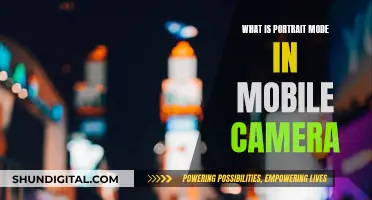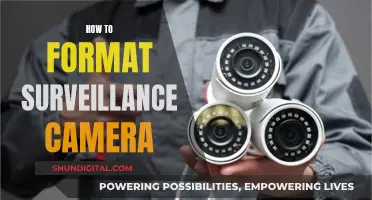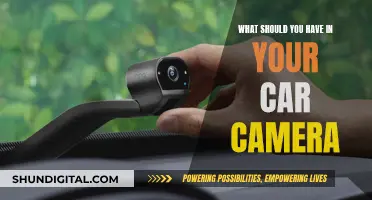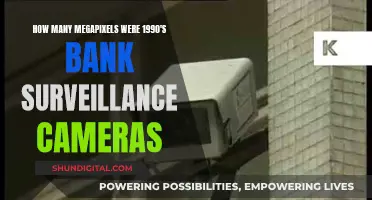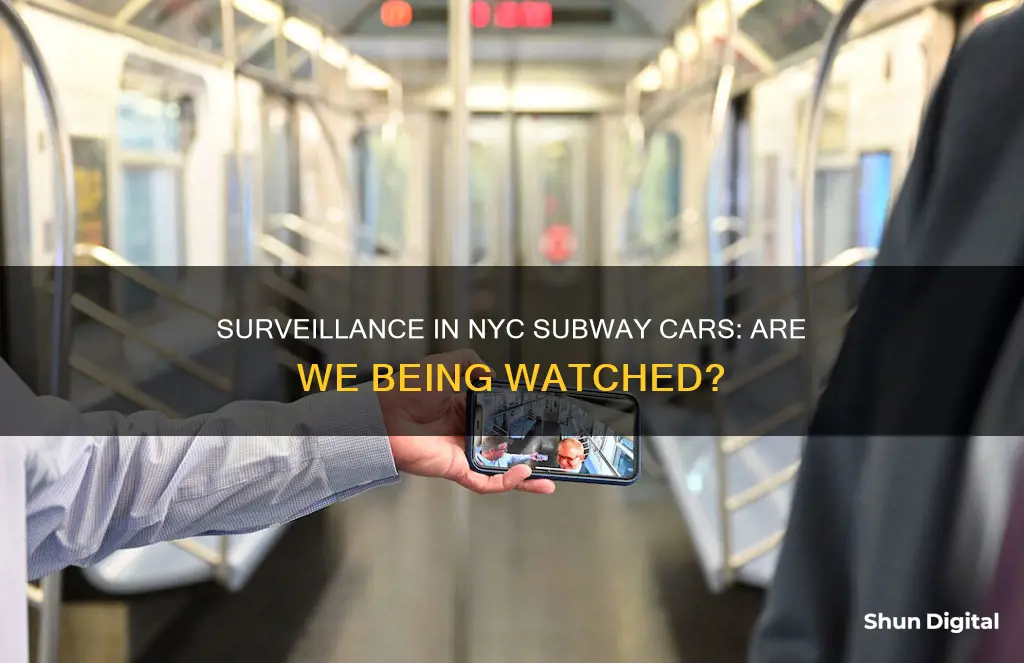
Crime in the New York subway has been a concern for many years, with felony crimes including murder, rape, robbery, grand larceny, felony assault and burglary. In 2021, all 472 of New York City's subway stations were equipped with security cameras, with the final station to receive them being the Broadway stop on the G line. However, there has been some debate about whether cameras should be installed inside the subway cars themselves. Some argue that this would improve safety and help to identify and apprehend perpetrators, while others worry about the potential for abuse and the logistical challenges of implementing such a system.
What You'll Learn

Cameras in NYC subway cars: pros and cons
The New York City Subway System has been the site of several crimes, including a mass shooting in Brooklyn, random attacks, muggings, and concerns about rising numbers of homeless people. In response, Governor Kathy Hochul announced plans to install security cameras in every subway car to improve safety and deter crime. This decision has sparked debates about the pros and cons of surveillance in subway cars.
Pros
One of the main advantages of installing security cameras in NYC subway cars is enhanced security and deterrence of crimes. Governor Hochul stated that the cameras would "get the message out that we're going to be having surveillance of activity on the subway trains, and that's going to give people great ease of mind." John Samuelsen, President of Transport Workers Union Local 100, echoed this sentiment, saying, "Anything that improves security and helps our conductors keep riders safe is a positive." The presence of cameras may make potential criminals think twice before committing a crime, knowing that they could be identified and brought to justice.
Another benefit of security cameras in subway cars is the provision of valuable evidence in the event of a crime. While the cameras cannot be monitored live, they will capture video footage that investigators can use to identify perpetrators and aid in their investigations. This was highlighted by MTA Chief Safety Officer Pat Warren, who said, "if you are a criminal, and we know where a crime took place, we will be able to go to those recordings, find you, and deliver that image to the police so they can investigate."
Cons
One of the main concerns regarding the installation of security cameras in NYC subway cars is the potential invasion of privacy. Some people may feel that constant surveillance invades their personal space and freedom. MTA Chief Safety Officer Pat Warren addressed this issue, stating, "These cameras are not there to watch or invade in any way on the personal experience of our riders." However, it is essential to ensure that the cameras are used solely for security purposes and that proper protocols are in place to protect riders' privacy.
Another possible disadvantage is the cost of implementing and maintaining such a comprehensive camera system. The installation of cameras in all subway cars is estimated to cost $5.5 million, with the purchase of 5,400 cameras for 2,700 subway cars. While Governor Hochul has secured funding through the Urban Area Security Initiative federal grant program, it is still a significant expense that could impact other areas of the transit system's budget.
In conclusion, the decision to install security cameras in NYC subway cars has both advantages and disadvantages. While the cameras may enhance security and deter crimes, providing valuable evidence when needed, there are also concerns about privacy invasion and the financial burden of implementing such a system. It is essential to carefully consider both sides of the debate and ensure that any surveillance measures are implemented with transparency, accountability, and respect for civil liberties.
Camera Battery Safety: Are Third-Party Options Reliable?
You may want to see also

Cameras in NYC subway stations
As of September 2021, all 472 New York City subway stations have been equipped with security cameras. The Metropolitan Transportation Authority (MTA) announced the installation of the last of the thousands of cameras at the G line's Broadway stop. The move came after a spike in crime in the subway system during the COVID-19 pandemic, which saw ridership drop by more than 90%.
The installation of cameras in NYC subway stations has been accelerated over the last year. In September 2021, transit officials announced that each of the city's 472 subway stations was now equipped with security cameras. This was a significant increase from the year before, when fewer than 60% of subway stations had cameras. The rollout was quickened thanks to former interim NYC Transit president Sarah Feinberg, who pushed for the installation of a new class of cameras that could be deployed more quickly and at a much lower cost than traditional cameras.
The MTA's camera arsenal is split 30-70 between cameras that officials can access centrally in real-time and cameras that are locally recorded. The locally recorded cameras are easier to install and provide material that can be retrieved quickly for use in criminal investigations. The MTA has said that they do not use facial recognition software in their subway cameras.
The addition of security cameras has helped increase arrests. According to the MTA, recent arrests have increased by more than 28%, and transit officials believe the surveillance surge is helping to drive down subway crime.
The MTA has also earmarked $332 million for security technology upgrades and passenger ID in the subways through the agency's 2020-2024 capital plan, which will include the further expansion of security cameras.
While there are currently no security cameras in subway cars that are in passenger service, this is beginning to change. The MTA has ordered 535 new subway cars that come with pre-installed cameras, with the first of these cars scheduled to begin carrying riders in September 2022.
Cobra Surveillance Cameras: Do They Need Wi-Fi?
You may want to see also

Cameras on MTA buses
The Metropolitan Transportation Authority (MTA) has implemented several measures to enhance security and improve the commuting experience for passengers in New York City. One notable initiative is the installation of cameras on MTA buses.
The MTA has equipped buses with cameras to monitor and enforce bus lane compliance. The Automatic Bus Lane Enforcement (ABLE) cameras are designed to capture vehicles driving or parked in bus lanes, obstructing the path of buses. This system was introduced to reduce traffic congestion and improve bus speeds. Drivers of offending vehicles receive warnings in the mail for the first 60 days, after which they are subject to fines ranging from $50 for the first violation to a maximum of $250 for repeat offences within a 12-month period. The ABLE cameras have been credited with not only enforcing bus lane compliance but also increasing bus speeds and ridership on certain routes.
In addition to the ABLE cameras, the MTA has also installed security cameras at all of New York City's 472 subway stations. These cameras are intended to deter crime and assist the NYPD in investigating and capturing perpetrators. The MTA has stated that they do not use facial recognition software in their subway cameras, and the primary purpose is to enhance the safety of riders and combat subway crimes.
The MTA is committed to utilising technology, such as cameras, to improve the safety and efficiency of its transportation system. These measures aim to provide a safer and more reliable commuting experience for New Yorkers and visitors alike.
Surveillance Cameras: Security, Privacy, and You
You may want to see also

Cameras on LIRR and Metro North trains
In 2014, the Metropolitan Transportation Authority (MTA) announced plans to install video cameras and audio recorders on most Metro-North and Long Island Rail Road (LIRR) trains. This move was in response to safety recommendations from the National Transportation Safety Board following a train derailment in the Bronx that killed four people in 2013.
The MTA stated that the purpose of the cameras was to aid in post-accident investigations and to deter behaviours that could negatively impact the trains' safe operation. Connecticut Senator Richard Blumenthal called the plan a "long overdue" step towards improving safety on the Metro-North line, which had experienced several incidents in 2013, including two derailments that resulted in injuries and fatalities.
The MTA also intended to implement positive train control technology, designed to automatically stop or slow trains before certain accidents occur.
While there is no recent update on the status of camera installations on LIRR and Metro-North trains, the MTA has continued to prioritise safety and security across its transportation systems. In 2021, the MTA announced that all 472 NYC subway stations were equipped with security cameras, with plans to have live coverage of all stations by the end of that year.
The MTA has also invested in new subway cars with pre-installed cameras, demonstrating a continued commitment to enhancing safety measures across its rail systems.
Florida School Bus Camera Tickets: What's the Law?
You may want to see also

Effectiveness of cameras in reducing crime
In recent years, New York City has been working to increase the number of security cameras in its subway stations and cars. As of September 2022, the city announced plans to install security cameras in every subway car, with the goal of having them in all 472 subway stations by the end of the year. This is part of an initiative to deter crime and improve passenger confidence in mass transit safety. The Metropolitan Transportation Authority (MTA) also plans to install cameras in hundreds of subway cars per month and expects every car to be equipped with cameras by 2025.
The effectiveness of these cameras in reducing crime is a matter of debate. Some transit officials and representatives of the MTA believe that the surveillance surge is helping to drive down subway crime. For example, the number of arrests by NYPD Transit cops jumped from 3,125 in July to 3,680 in August, with the extra cameras proving essential in capturing suspects.
On the other hand, some people, including representatives of the New York Civil Liberties Union (NYCLU), argue that there is "no evidence" that the expansion of cameras in transit will improve safety. They raise concerns about privacy and the potential for a "sweeping surveillance state." It is also questioned whether police will be able to effectively sift through the large amount of data collected by the cameras.
One advantage of the new cameras is that they are easier to install and provide material that can be retrieved quickly for investigations. The MTA has also denied that it uses facial recognition software in its subway cameras. The total cost of the camera installation program is estimated to be $5.5 million, with funding coming from a combination of federal grants and the MTA's own budget.
Wi-Fi Doorbell Cameras: Battery or Wired Power?
You may want to see also
Frequently asked questions
Yes, there are cameras in NYC subway cars. The MTA has installed cameras in all 472 subway stations and is also in the process of installing cameras in subway cars.
The primary reason for installing cameras in the NYC subway is to combat crime and help riders feel safer. The cameras are used to investigate and resolve crimes, and their presence has been shown to drive down subway crime rates.
The camera system in the NYC subway consists of two types of cameras. Some cameras broadcast live footage to the subway's security center, while others record locally and can provide footage for criminal investigations.
The MTA has denied using facial recognition software in its subway cameras.



